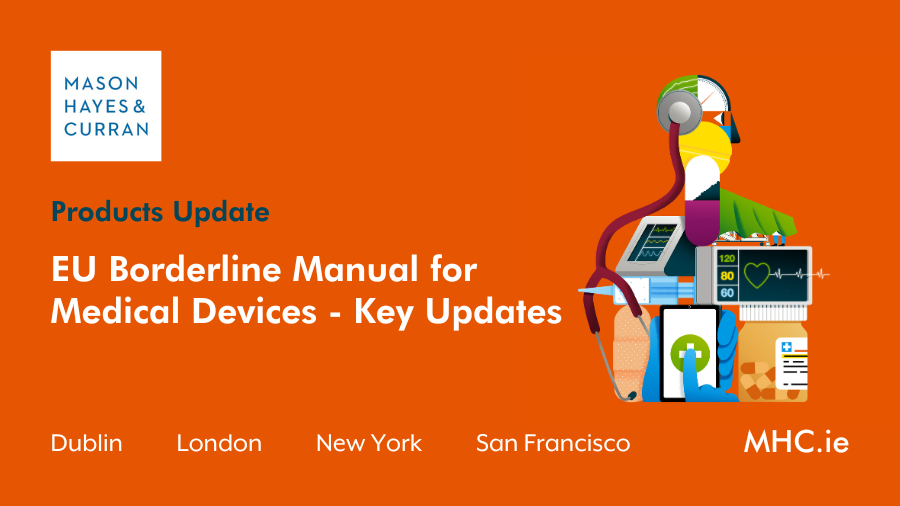EU Borderline Manual for Medical Devices - Key Updates
MDCG Guidance on digital health products

The latest version of the Manual on Borderline and Classification for Medical Devices was recently published by the European Commission’s Medical Device Coordination Group. It serves as a guide for the qualification and classification of medical devices under the relevant European regulatory framework. Our Products team provides an overview of helpful decisions made in the Manual on the qualification and classification of certain digital health devices.
The European Commission’s Medical Device Coordination Group (MDCG) recently published an updated version of its Manual on Borderline and Classification for Medical Devices (the Manual). The Manual records the decisions made by the MDCG’s Borderline and Classification Working Group (BCWG) under the Helsinki Procedure as provided for in the Medical Device Regulation (MDR) and the In Vitro Diagnostics Regulation (IVDR).
While not legally binding, the Manual serves as an important guide on the qualification and classification of ‘borderline’ cases under the European regulatory framework for medical devices. This is particularly helpful for digital health and medical device software products where qualification and classification issues are common.
The Manual contains a number of worked examples of borderline qualification and classification cases. However, it is a work in progress and will continue to be populated as cases are finalised by the BCWG under the Helsinki Procedure. While the old version of the Manual, which related to Directive 93/42/EEC on medical devices (MDD) and Directive 98/79/EC on in vitro diagnostic medical devices (IVDD), had an entire section covering the classification of software and mobile applications, the Manual currently contains a limited number of digital health-related examples:
- Temperature sensors embedded in orthopaedic devices for compliance tracking, for example scoliosis braces. These devices are not considered an accessory to a medical device as the sensor does not specifically and directly assist the medical functionality of the orthopaedic device. They are also not considered a medical device in their own right because the orthopaedic device can function without it.
- Medical calculators to facilitate routine medical calculations at the point of care for multiple clinical disciplines through an app or webpage. For example, the calculation of stroke risk for patients with atrial fibrillation. Given their intended use for a medical purpose, these devices are considered a medical device in accordance with the MDR. As classification rule 11 applies, software intended to provide information which is used to take decisions with diagnosis or therapeutic purposes, they are classified as at least class IIa.
- Smartphone application for STI prevention strategies intended to prevent STI by the exchange of information between different sexual partners. The risk calculation is considered an epidemiologic tool rather than a prevention tool within the meaning of the medical device definition and so, the product is not considered a medical device under the MDR.
Conclusion
The Manual will be updated as more decisions are made regarding borderline qualification and classification cases. While not legally binding, it is highly recommended that manufacturers of medical devices and in vitro diagnostics (IVDs) familiarise themselves with the views expressed by the MDCG in the Manual. It should be read in conjunction with other MDCG documents providing guidance on borderline cases and the classification of medical devices and IVDs.
The up-to-date version of Manual can be accessed online.
For more information, contact a member of our Product Regulation & Consumer team.
The content of this article is provided for information purposes only and does not constitute legal or other advice.
Share this:





